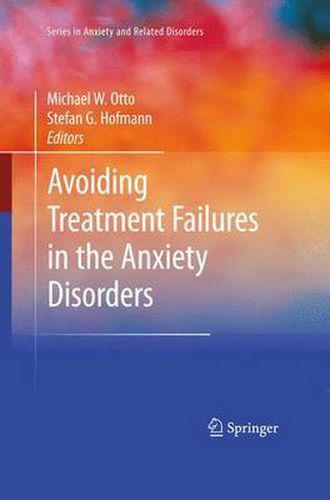Readings Newsletter
Become a Readings Member to make your shopping experience even easier.
Sign in or sign up for free!
You’re not far away from qualifying for FREE standard shipping within Australia
You’ve qualified for FREE standard shipping within Australia
The cart is loading…






This title is printed to order. This book may have been self-published. If so, we cannot guarantee the quality of the content. In the main most books will have gone through the editing process however some may not. We therefore suggest that you be aware of this before ordering this book. If in doubt check either the author or publisher’s details as we are unable to accept any returns unless they are faulty. Please contact us if you have any questions.
Extensive studies have shown cognitive-behavioral therapy to be highly effective in treating anxiety disorders, improving patients’ social functioning, job performance, and quality of life. Yet every CBT clinician faces some amount of client resistance, whether in the form of This won’t work , I’m too depressed , or even You can’t make me! Avoiding Treatment Failures in the Anxiety Disorders analyzes the challenges presented by non-compliance, and provides disorder- and population-specific guidance in addressing the impasses and removing the obstacles that derail therapy. Making use of extensive clinical expertise and current empirical findings, expert contributors offer cutting-edge understanding of the causes of treatment complications-and innovative strategies for their resolution-in key areas, including:
The therapeutic alliance
The full range of anxiety disorders (i.e., panic, PTSD, GAD)
Comorbidity issues (i.e., depression, personality disorders, eating disorders, substance abuse, and chronic medical illness)
Combined CBT/pharmacological treatment
Ethnic, cultural, and religious factors
Issues specific to children and adolescents.
Both comprehensive, and accessible, Avoiding Treatment Failures in the Anxiety Disorders will be welcomed by new and seasoned clinicians alike. The window it opens onto this class of disorders, plus the insights into how and why this treatment works, will also be of interest to those involved in clinical research.
$9.00 standard shipping within Australia
FREE standard shipping within Australia for orders over $100.00
Express & International shipping calculated at checkout
This title is printed to order. This book may have been self-published. If so, we cannot guarantee the quality of the content. In the main most books will have gone through the editing process however some may not. We therefore suggest that you be aware of this before ordering this book. If in doubt check either the author or publisher’s details as we are unable to accept any returns unless they are faulty. Please contact us if you have any questions.
Extensive studies have shown cognitive-behavioral therapy to be highly effective in treating anxiety disorders, improving patients’ social functioning, job performance, and quality of life. Yet every CBT clinician faces some amount of client resistance, whether in the form of This won’t work , I’m too depressed , or even You can’t make me! Avoiding Treatment Failures in the Anxiety Disorders analyzes the challenges presented by non-compliance, and provides disorder- and population-specific guidance in addressing the impasses and removing the obstacles that derail therapy. Making use of extensive clinical expertise and current empirical findings, expert contributors offer cutting-edge understanding of the causes of treatment complications-and innovative strategies for their resolution-in key areas, including:
The therapeutic alliance
The full range of anxiety disorders (i.e., panic, PTSD, GAD)
Comorbidity issues (i.e., depression, personality disorders, eating disorders, substance abuse, and chronic medical illness)
Combined CBT/pharmacological treatment
Ethnic, cultural, and religious factors
Issues specific to children and adolescents.
Both comprehensive, and accessible, Avoiding Treatment Failures in the Anxiety Disorders will be welcomed by new and seasoned clinicians alike. The window it opens onto this class of disorders, plus the insights into how and why this treatment works, will also be of interest to those involved in clinical research.